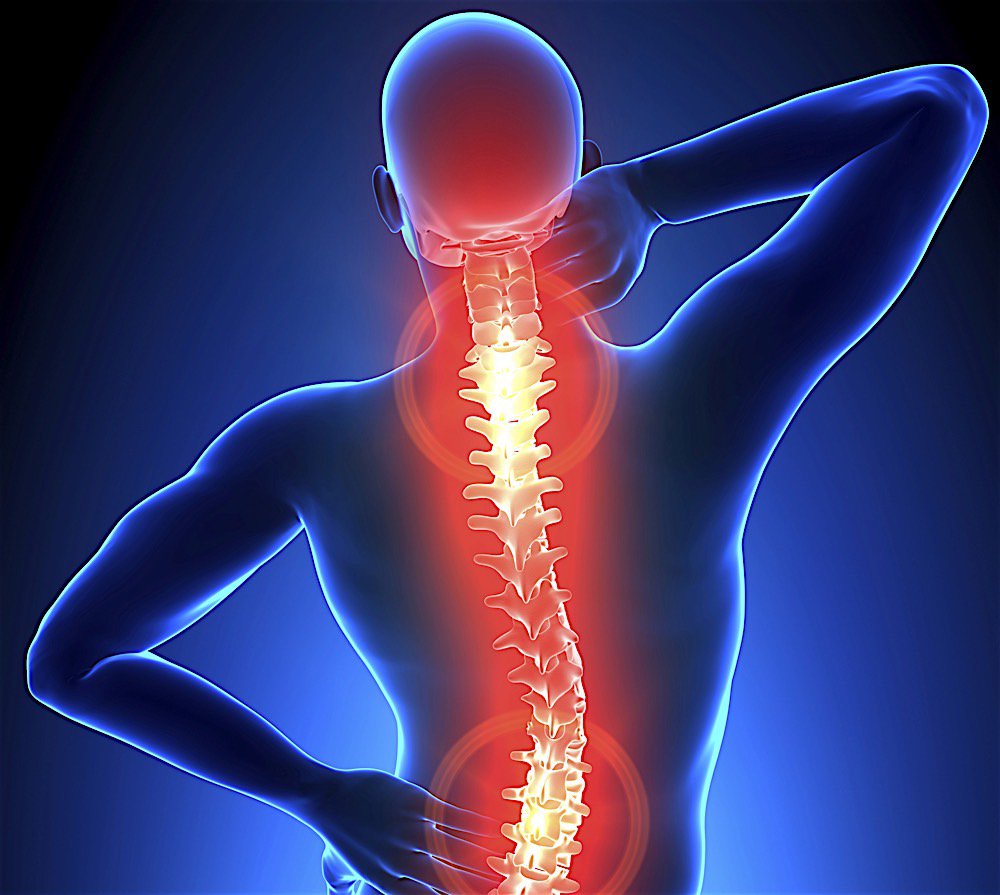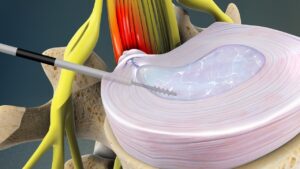Many people suffer from chronic back pain, which can impact their quality of daily life and prevent them from performing their usual activities. While some resort to traditional treatments such as painkillers or even surgery, in recent years, an advanced and safe technology known as radiofrequency ablation has emerged as an effective, non-surgical alternative to treating this pain.
In this article, we discuss in detail what radiofrequency ablation is, how this technique is performed, who are the candidates for radiofrequency ablation of the spine , its benefits, and why Dr. Hesham El-Azzizi recommends it at his various branches: Heliopolis, Fifth Settlement, Mohandessin, and Alexandria.
What is thermal frequency?
Radiofrequency ablation is a precise medical procedure that uses high-frequency electrical waves to create a thermal effect on the nerves that transmit pain sensations, reducing or eliminating pain sensations for an extended period without affecting motor nerve function.
Radiofrequency is widely used to treat many spinal pain conditions, such as:
- lumbar or cervical vertebrae pain
- herniated disc
- vertebral roughness
- sciatica pain
- facet joint pain
- Some cases of chronic nerve pain

How is radiofrequency ablation of the spine performed?
Radiofrequency ablation is performed under interventional radiology or x-ray guidance in a sterile operating room. The physician inserts a fine needle into the nerve responsible for the pain. Radiofrequency waves are then transmitted through the needle to heat the nerve to a controlled degree, temporarily disrupting its pain function.
The procedure is usually performed under local anesthesia only, and the patient does not require hospitalization or a long recovery period. Rather, the patient can return home a few hours after the session.
Conditions that may require radiofrequency ablation
There are several conditions that may benefit from radiofrequency treatment , including:
- Chronic lower back pain: Radiofrequency ablation is a good option for patients with chronic lower back pain caused by arthritis or disc inflammation.
- Pain associated with a herniated disc: Radiofrequency ablation can help relieve pain associated with a herniated disc and reduce pressure on the nerves.
- Nerve pain: such as sciatic nerve or nerves damaged by accidents or previous surgery, where radiofrequency can stop the transmission of pain signals.
- Neck pain: Radiofrequency ablation can help relieve neck pain caused by pressure on nerves or inflammation of the spinal joints.
Features of radiofrequency
One of the most important features of radiofrequency ablation is that it is a safe and effective procedure and an excellent alternative to major surgery. Here are the most important benefits:
- No surgery or opening required
- short recovery period
- It is done under local anesthesia.
- It does not cause permanent nerve damage.
- Quick and tangible results
- Suitable for patients who are unable to undergo surgery
- Can be repeated as needed.
Read also : Radiofrequency with the best pain treatment doctor
Who is a candidate for radiofrequency ablation?
Thermal frequency is suitable for the following cases:
- Patients with herniated discs who do not improve with drug therapy
- Patients with osteoarthritis
- Those who suffer from sciatica pain
- Chronic lower back or neck pain
- Patients whose health condition does not allow for major surgeries
Why choose Dr. Hesham Al-Azzizi?
Dr. Hesham El-Azzizi is a pioneer in the field of pain management and interventional medicine in Egypt. He has extensive experience using radiofrequency ablation to treat spinal pain. He relies on the latest international equipment and implements precise treatment protocols to ensure the best possible outcomes for patients.
Dr. Hesham Al-Azzizi is available in several branches to provide services with the highest level of professionalism:
- Heliopolis branch
- Fifth Settlement Branch
- Engineers Branch
- Alexandria branch
The difference between radiofrequency and traditional surgery
Traditional surgery carries the risks of general anesthesia, the potential for complications, and a lengthy recovery period. Radiofrequency ablation, on the other hand, is a safer alternative that delivers excellent results without these risks, making it the ideal choice for many patients.

Post-radiofrequency
After radiofrequency ablation, patients may experience significant improvement within a few days. It is recommended to follow their doctor’s instructions, such as temporarily avoiding excessive physical exertion and adhering to physical therapy if prescribed.
a summary
Radiofrequency ablation has revolutionized the traditional treatment of spinal pain, making it a safe and accessible option for patients seeking pain relief without resorting to surgery. Thanks to Dr. Hesham El-Azzizi’s expertise, this service is now available at his multiple branches in Heliopolis, Fifth Settlement, Mohandessin, and Alexandria, making it closer to anyone seeking effective and safe treatment.
The most common questions about radiofrequency ablation of the spine
It is a non-surgical interventional treatment technique that uses radiofrequency waves to reduce pain signals from the nerves responsible for vertebral and spinal pain.
A fine needle guided by interventional radiology is inserted into the area of the nerve causing the pain. Radiofrequency waves are then sent to temporarily disrupt the function of this nerve, reducing the sensation of pain.
It is usually performed under local anesthesia, and the patient may only feel a slight tingling or pressure during the procedure.
The patient often feels a noticeable improvement in pain within a few days after the procedure, and the results may last from 6 months to a year or more. What is radiofrequency ablation of the spine?
How is radiofrequency ablation performed?
Is radiofrequency ablation painful?




